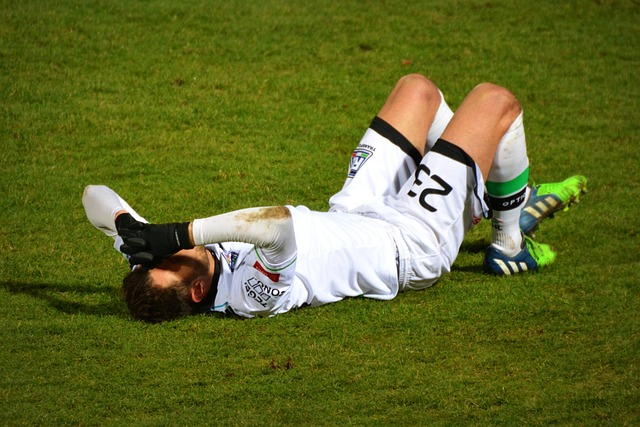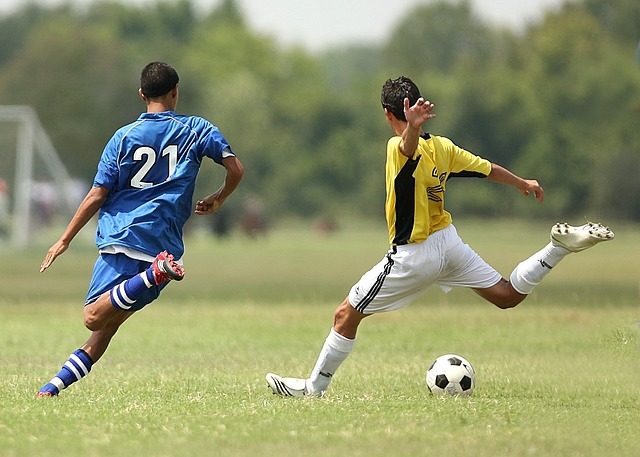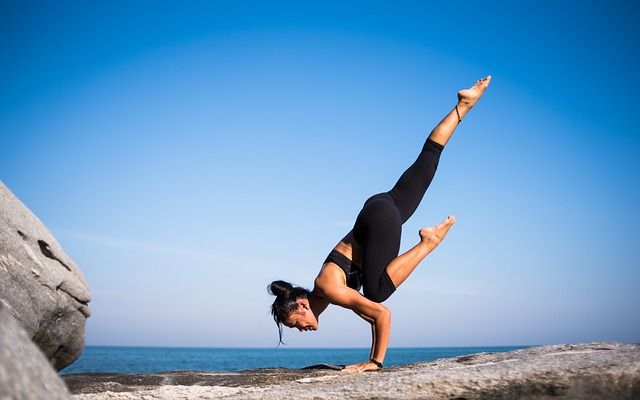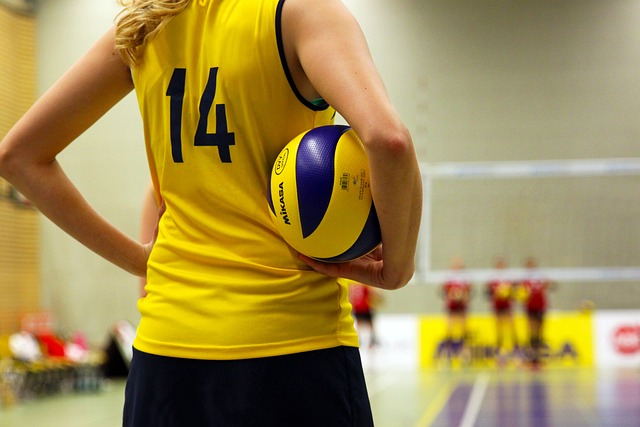Every athlete, from weekend warriors to professionals, seeks to stay injury-free to keep playing the sport they love. Preventive care for sports injuries is essential for this goal, but where should you start? This article offers practical and strategic guidance on proactively safeguarding your body against sports-related injuries. From mastering techniques to understanding the role of proper equipment and nutrition, get ready to learn solid strategies that amplify your athletic longevity—without the fluff.
Key Takeaways
- Injury prevention in sports encompasses mastering proper exercise techniques, using protective equipment, and enhancing physical conditioning to reduce the risk of injuries.
- Special considerations for young athletes include understanding their growth stage for suitable training, ensuring adequate rest, and prioritizing emotional well-being to promote safety and avoid injuries.
- Building resilience to injuries involves incorporating dynamic warm-ups, cool-downs, and sport-specific conditioning, along with proper nutrition, hydration, and using the right protective gear.
The Pillars of Injury Prevention in Sports

Injury prevention in sports is a multifaceted field that revolves around three major pillars:
- Mastering proper techniques: Unnecessary strain can be minimized and overall performance can be enhanced by mastering the correct exercise techniques.
- Using protective equipment: Protective equipment, often seen as an athlete’s safety armor, plays a crucial role in reducing the risk of severe injuries.
- Physical conditioning: Physical conditioning is the key to enhancing an athlete’s strength, endurance, flexibility, and overall health, reducing the likelihood of sports-related injuries. By following these sports injury prevention tips and taking steps to prevent sports injuries, athletes can significantly reduce their risk of injury.
Mastering Proper Technique
The journey to athletic excellence begins with a focus on proper technique. Why do you think seasoned athletes make their sport look so effortless? It’s because they’ve mastered the correct form and technique. All further development is grounded on this foundational support.
Targeting the biceps during curls or maintaining the correct posture during a sprint, all fall under the umbrella of proper exercise technique. It helps prevent unnecessary strain and enables athletes to effectively engage the intended muscle groups. Remember, it’s not just about working hard but working smart.
Protective Equipment: Your Safety Armor

Consider protective equipment as the safety armor for the sports battlefield. From helmets to mouth guards, and safety pads to protective eyewear, each piece of gear plays a crucial role in reducing the risk of severe sprains, strains, fractures, and other injuries.
Did you know that wearing the right footwear can prevent approximately 25% of all athletic injuries involving the feet? Therefore, when you gear up for a game or a workout next time, keep in mind that your protective equipment is not just an accessory, but a lifeline.
The Role of Physical Conditioning
Physical conditioning serves as the secret sauce to bolster an athlete’s resilience against injuries. It’s a comprehensive regimen that includes strength training, cardiovascular conditioning, and exercises to improve balance, proprioception, and agility. Whether you’re a seasoned athlete or a beginner, incorporating a general conditioning program into your routine can help prevent both traumatic and overuse injuries.
Ultimately, a well-conditioned body is not just strong but more resistant to injuries.
Nurturing Young Athletes: Special Considerations for Preventive Care
Young athletes deserve special attention when it comes to injury prevention. Their bodies are still growing and developing, and this presents unique challenges and considerations. From understanding their developmental stage to ensuring they get adequate rest and recovery, preventive care for young athletes is about much more than just avoiding injuries.
The goal is to promote safety and maintain their active participation in sports, avoiding sidelining due to injury.
Growth and Development: Minimizing Risk
When nurturing young athletes, it’s essential to understand their growth and development stage. Adolescents undergo significant changes in body composition, muscle growth, and flexibility, all of which can impact sports performance and necessitate adjusted training approaches. It’s crucial to tailor athletes’ sports participation to their developmental stage, taking into account their physical, cognitive, and psychosocial maturation.
Early specialization in a single sport can escalate injury rates due to overuse, thus, advocating participation in various sports is significant to prevent frequent sports injuries.
Ensuring Adequate Rest and Recovery
Rest and recovery are as important as training for young athletes. Ensuring adequate sleep is vital for their physical and mental health, contributing to improved performance. Did you know that teen athletes require about nine to ten hours of sleep each night to support their development, recovery, and academic and athletic performance?
The focus is not solely on getting enough sleep but also on enhancing sleep quality by preserving constant sleep and practice times and dodging habits that disrupt sleep like exposure to screens before bedtime and late caffeine consumption.
Emotional Well-being in Youth Sports

Sports is not just about physical fitness; it’s also about emotional well-being. The competitive nature of sports can lead to significant emotional stress for young athletes, which can impact their mental health. It’s crucial to establish a positive sports environment where the focus is on effort and self-improvement rather than solely on winning.
Beyond bolstering their physical health, sports programs that integrate mental health activities such as yoga and creative self-expression also aid in nurturing a sense of community and catering to athletes’ mental health requirements.
Strategic Training: Building Resilience to Injuries
Building resilience to injuries heavily relies on strategic training. This involves a holistic approach that incorporates dynamic warm-ups, cool-downs, and sport-specific conditioning into the training regimen. Setting realistic training goals or instituting preventative measures to ward off reinjury post-recovery, the correct training strategy can curtail the probability of sports injuries.
Dynamic Warm-Ups: Activating Muscles for Action
Just as trying to drive a car on a cold winter morning without warming it up first is not practical, the same logic applies to our bodies before a workout or a sporting event. Dynamic warm-ups are like the pre-drive warm-up for your body. They increase muscle temperature and performance, preparing the body for the physical activity ahead. Some examples of dynamic warm-up exercises include:
- Arm circles
- High knees
- Butt kicks
- Walking lunges
- Jumping jacks
- Leg swings
Incorporating stretching exercises into your warm-up routine can help prevent injuries and improve your overall performance.
Warm-ups like leg swings to high knees actively involve muscles and joints, thereby enhancing dynamic flexibility for high-intensity activities.
Cool-Downs: Easing the Body Post-Exercise
Cooling down after physical activity is as crucial as warming up as it assists the body to revert to a resting state. Think of it as a period of active recovery. Cool-down activities like light jogging or stretching can help to reduce muscle stiffness and soreness after intense physical activity. Cool-down exercises, by promoting blood flow and facilitating the removal of lactic acid build-up, can help avert dizziness or fainting and expedite recovery.
Sport-Specific Conditioning: Tailored Strength Training

Sport-specific conditioning takes your training to the next level. It involves tailored exercises that enhance performance by focusing on the muscles and movements vital to a particular sport. For example, shuttle runs and core exercises can equip the body for unexpected movements and help maintain proper alignment to prevent injuries.
Sport-specific conditioning can aid both professional athletes and sports enthusiasts in performing common movements with increased ease and in reducing the risk of exercise-common sports injuries.
Nutrition and Hydration: Fueling for Injury Prevention
When it comes to injury prevention, fueling your body with the right nutrients and staying hydrated is just as important as your training regimen. A well-balanced diet supports your body by providing essential nutrients for muscle repair, bone strength, and overall fitness.
Meanwhile, staying hydrated before, during, and after sports activities is crucial for maintaining performance and preventing injuries.
The Power of Proper Nutrition
Proper nutrition is to your body what high-quality fuel is to a sports car. It’s the key to unlocking your athletic potential. Whether you’re a young athlete undergoing significant changes in body composition, muscle growth, and flexibility, or a seasoned athlete trying to maintain peak performance, the impact of proper nutrition on athletic performance, endurance, and injury prevention cannot be overstated.
Do not forget that nutrient-dense carbohydrates are vital for sustaining high energy levels, thereby contributing to optimal performance and aiding in injury prevention.
Staying Hydrated: More Than Just Drinking Water
While drinking water is important, staying hydrated is more than just quenching your thirst. It’s about maintaining fluid balance before, during, and after physical activity. Did you know that the color of your urine can indicate your hydration levels, with pale straw yellow being ideal? Darker urine suggests dehydration and an increased risk of injury.
Hence, when you gear up for a game or a workout next time, make sure to hydrate adequately to maintain performance and lower the risk of injuries.
Gear Up: Choosing the Right Equipment for Safety

The selection of the right sports equipment concerns not merely performance but safety as well. Whether it’s the helmet you wear or the shoes you run in, each piece of gear plays a crucial role in transferring the stresses of the activity effectively to avoid injury. With advances in technology, the future of sports equipment customization may include technologies like 3D printing and smart textiles, offering personalized protective gear solutions.
Footwear Fundamentals
Ever tried running a marathon in flip-flops? Sounds ludicrous, right? That’s because we all understand the importance of wearing the right footwear for our activities. Proper footwear, such as sports cleats or court shoes with good traction, can reduce the risk of overuse injuries and enhance performance.
Ill-fitting shoes, whether too tight or too loose, can boost injury risk and adversely affect athletic performance. So, when you’re gearing up for your next game or workout, make sure to give your footwear the attention it deserves.
Custom-Fitted Protection
Custom-fitted protective gear is like having a bodyguard tailored to your specific needs. It enhances performance, allows for better mobility, and reduces discomfort during use. So whether it’s a helmet for a bike ride or knee pads for a skateboarding session, take the time to try on protective equipment before purchase to ensure it’s comfortable and doesn’t hinder your mobility.
Remember, when it comes to protective gear, one size doesn’t fit all.
Navigating the Healthcare Landscape: When to Seek Medical Advice
Injuries, including serious injuries, can still occur despite having the best preventive measures in place. But knowing when to seek medical advice can make all the difference in recovery. Immediate medical attention is necessary if you experience:
- severe pain
- swelling
- limping
- any other symptoms that don’t improve with rest.
Consultation with a sports medicine specialist such as Dr. Kevin Plancher can yield customized care tailored to your unique health needs, sport, and activity level, thereby facilitating effective treatment and swift return to activity.
Identifying Signs of More Serious Injury
In sports, pain is often an unavoidable part of the process. However, not all pain is created equal. Pain that deviates from regular post-exercise soreness could indicate a more serious condition. Some examples of acute traumatic common injuries, which are also considered most frequent sports injuries, that typically occur suddenly and necessitate immediate medical attention are:
- Fractures
- Sprains
- Strains
- Concussions
Experiencing joint pain, unlike routine muscle aches, strongly indicates a need for activity modification to prevent the risk of further injury.
The Importance of Early Intervention
The outcome of your recovery can be significantly influenced by early intervention following an injury. It’s crucial to stop play or exercise immediately once an injury is sustained. Most minor sports injuries benefit from the RICE method as a first-line treatment. The RICE method stands for:
- Rest
- Ice
- Compression
- Elevation
Following these steps can help reduce pain and swelling and promote healing.
Rehabilitation programs, such as physical therapy and massage, can restore strength, range of motion, and function. Keep in mind that the earlier you seek treatment, the higher your chances for a full and swift recovery.
The Mental Game: Psychological Aspects of Injury Prevention
The realm of sports is not just physical—it’s also psychological. High levels of stress and anxiety can impede an athlete’s performance, leading to a higher risk of injury due to decreased concentration and focus. Moreover, athletes with certain personality traits, such as perfectionism or a high need for achievement, may be more inclined to push themselves past safe limits, increasing injury susceptibility.
Hence, addressing the psychological facets of injury prevention in sports is crucial.
Mental Toughness and Injury Resilience
Mental toughness and resilience are crucial for athletes in managing the pressures that can lead to risky behaviors and injuries. Athletes can build mental toughness by:
- Embracing challenges
- Cultivating a growth mindset
- Using self-talk strategies
- Practicing positive psychology techniques, such as gratitude and self-appreciation
These practices can aid in building mental toughness by promoting joy and a positive outlook.
Hence, the next time a challenge arises, bear in mind that your mental toughness holds equal importance to your physical strength in preventing injuries.
Stress Management Techniques
Managing stress is a crucial part of injury prevention in sports. Here are some relaxation techniques that can help:
- Deep breathing
- Meditation
- Progressive muscle relaxation
- Guided imagery
These techniques are recognized for their effectiveness in calming the mind and reducing muscle tension stemming from stress. Engaging in positive self-talk reinforces an athlete’s confidence while visualizing successful outcomes prepares the mind for high-pressure situations and can lead to improved performance.
The deployment of these stress management techniques can assist in maintaining calm under pressure and lowering the risk of injuries related to distraction.
Summary
In conclusion, sports injuries can be a major setback for athletes. However, with the right preventive measures, these injuries can be significantly minimized, if not entirely avoided. From mastering proper techniques and using protective gear to maintaining physical conditioning, nurturing young athletes, strategic training, proper nutrition, and hydration, choosing the right equipment, knowing when to seek medical advice, and managing stress, every aspect plays a crucial role in injury prevention. As Dr. Kevin Plancher often emphasizes, an ounce of prevention is worth a pound of cure. The game is in your hands. Play it safe.
Frequently Asked Questions
Ask Dr. Kevin Plancher what are the preventive measures for sports injuries.
To prevent sports injuries, develop a fitness plan that includes cardiovascular exercise, strength training, and flexibility, and be sure to alternate exercising different muscle groups and cooling down properly after exercise. This will help decrease your chance of injury.
What are the 3 areas of injury prevention?
Injury prevention requires different approaches at individual, societal, and environmental/engineering levels, including education, engineering modifications, and enforcement/enactment of policies to address risks.
Why is mastering proper technique important in sports?
Mastering proper technique in sports is crucial for performing at a high level and for preventing injuries. It minimizes unnecessary strain and enhances overall performance.
What is the role of protective equipment in sports?
Protective equipment in sports plays a crucial role in reducing the risk of severe injuries, acting as an athlete’s safety armor.
How does physical conditioning help reduce the risk of sports injuries?
Physical conditioning helps to enhance an athlete’s strength, endurance, flexibility, and overall health, reducing the likelihood of sports-related injuries.




 William D. Murrell, MD
William D. Murrell, MD Thomas B. Evely, DO
Thomas B. Evely, DO Clifford Voigt, MD
Clifford Voigt, MD Karthikeyan Chinnakkannu, MD
Karthikeyan Chinnakkannu, MD Max N. Seiter, MD
Max N. Seiter, MD Demetris Delos, MD
Demetris Delos, MD Lauren M. Fabian, MD
Lauren M. Fabian, MD